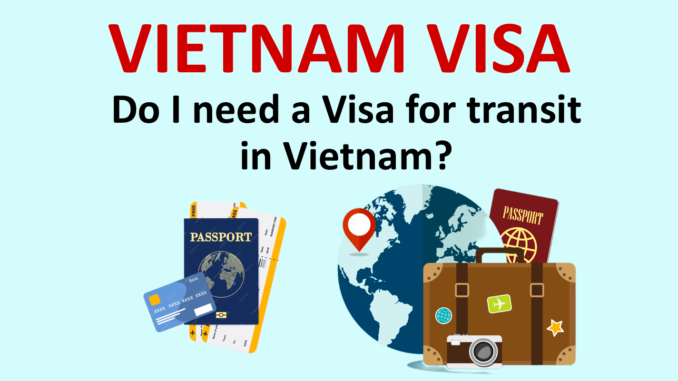
Are you planning a trip to Vietnam? Whether you’re going for leisure, business, or just transiting through, understanding the visa requirements is crucial to ensure a smooth journey. Vietnam is a captivating destination known for its rich culture, stunning landscapes, and delectable cuisine. However, before you embark on your adventure, it’s essential to grasp the intricacies of Vietnam’s visa regulations to avoid any last-minute hiccups. In this comprehensive guide, we’ll explore everything you need to know about Vietnam visas, including whether you need one for transit.
Understanding Vietnam Visa
A Vietnam Visa is an official document that allows foreign travellers to enter and stay in Vietnam for a specific period. It is an essential requirement for most visitors, and the type of visa you need depends on the purpose and duration of your stay.
The Vietnam Online Visa, also known as the E-Visa or electronic visa, is a digital visa that can be applied for and obtained online before your trip, offering a convenient alternative for eligible nationalities. This streamlined process eliminates the need for physical paperwork and allows for a more convenient application experience.
Do You Need a Visa for Transit in Vietnam?
The answer to whether you need a visa for transit in Vietnam depends on various factors, including your nationality, the duration of your layover, and your intended activities during transit.
In addition, Vietnam offers visa exemptions for certain nationalities for short periods. If your nationality. is in the Exemption List, then you don’t have to apply for a Visa for your transit. Check Visa Exemption List here.
Following Vietnamese regulations, foreigners transiting by air are exempt from visas and must stay in the transit area at the international airport while waiting for their next flight. Foreigners transiting by sea are not required to obtain a visa and must stay within the transit passenger area of the seaport while the ship is anchored. If you need to go through the Immigration checkpoint to re-check your baggage or to take a domestic flight, you will need to get a visa before departure.
Additionaly, the regulations also depend on your airline, so note to double-check with your airline to make sure if they require you to have a visa during transit.
In conclusion, understanding Vietnam’s visa requirements is essential for a hassle-free travel experience. While many travellers may enjoy visa exemptions, those transiting through Vietnam should be aware of the specific regulations governing transit visas. By planning ahead and familiarizing yourself with the visa options available, you can ensure a smooth journey to and through this captivating Southeast Asian destination.
Remember to check the latest visa information from official sources or consult with relevant authorities to stay updated on any changes to visa policies. With proper preparation, you can focus on enjoying the wonders that Vietnam has to offer without worrying about visa-related issues. Safe travels!
Related articles:
Who can apply for Vietnam E-Visa?
Things you should know before applying Vietnam E-Visa Application
Preparing for Vietnam: What You Need to Know Before Boarding
Vietnam E-Visa: Can It Be Amended?
Can I apply for another Vietnam E-Visa if I have an application in process?
Vietnam E-Visa: Single Entry Visa or Multiple Entry Visa?
Can I Hold Multiple Valid Vietnam E-Visas Simultaneously?
Can I apply for a new Visa while I am in Vietnam?
Procedures at the airport when entering Vietnam with E-Visa Letter